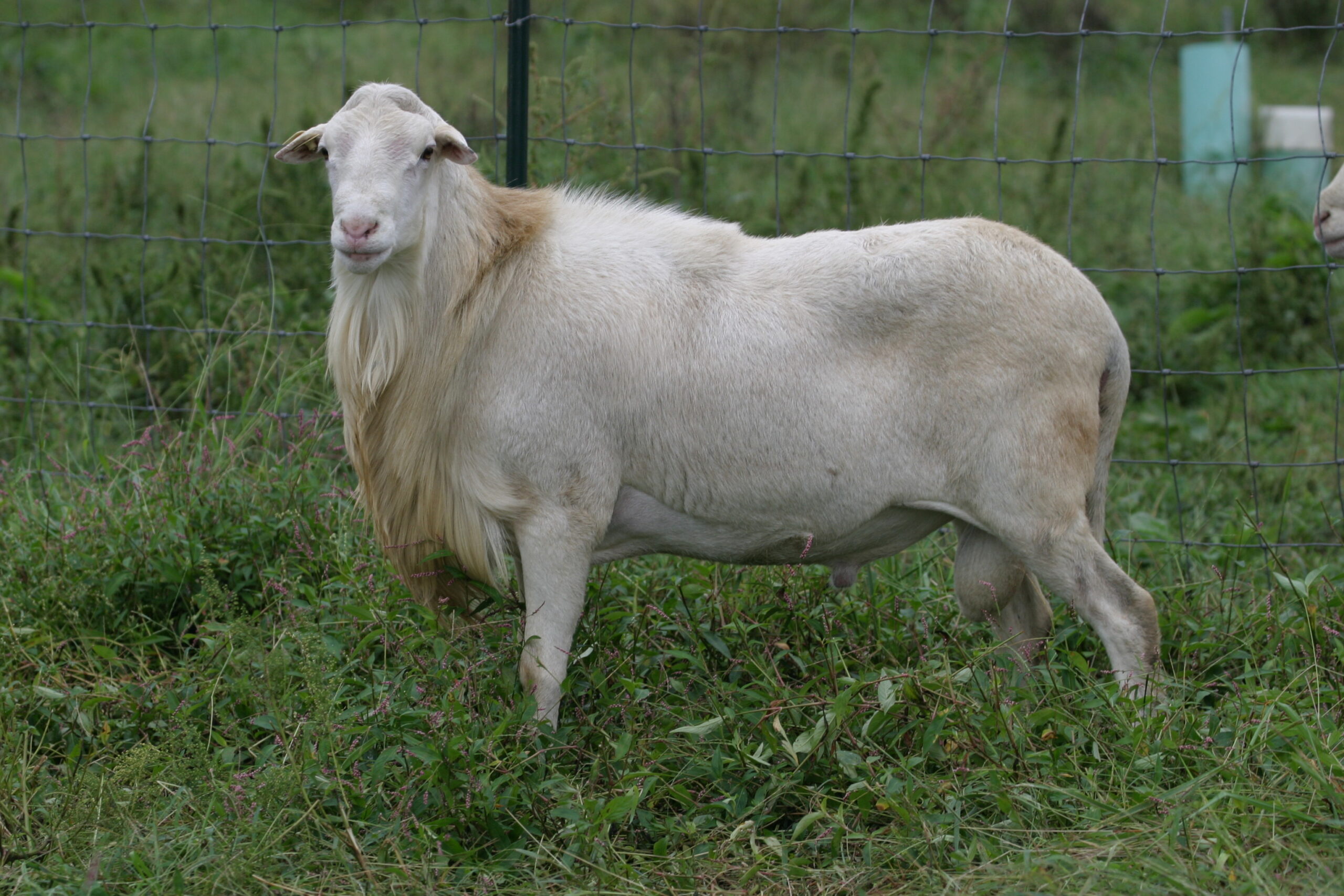“A breed standard is a formal description of the ideal animal in a specific breed, and is therefore an important tool in breed management and conservation. Breed standards straddle a delicate line between reflecting the actual animals within the breed, while also being a target to aim for as breeders strive for excellence.”
Sponenberg, D. Phillip, et al. Managing Breeds for a Secure Future: Strategies for Breeders and Breed Associations. 3rd ed., 5M Books Ltd, 2022. p. 84.
SCHSB established the breed standard for registered St. Croix Hair Sheep in 2013. The intent of the breed standard is to be descriptive of this landrace breed without being prescriptive. This approach to the breed standard allows the SCHSB to include more of the naturally occurring island variations, such as purebred St. Croix sheep with color and scurs. This is important to ensure that we effectively preserve the genetic variability of this breed.
General Appearance
The St. Croix is a medium-framed, well-muscled hair sheep. Ewes and rams should appear vigorous, alert, and healthy. Mature rams have a well-developed mane.
Head
St. Croix ewes and rams should have an attractive profile with the males exhibiting a “Roman” nose. Both sexes should be naturally polled but scurs are acceptable. Horns are not permitted. The ears should be fine textured neither upturned nor drooping, giving the appearance of alertness. The eyes are large and clear. Eye color varies. The head should be carried in an upright manner on a long graceful neck.
Top Line
The neck should join smoothly to the shoulder. There may be a dip in the topline immediately after the wither; the back then continues straight to the point of the hip at which the croup drops at a relatively acute angle to the tail head. Many believe this angle is facilitates the ease of lambing common in this breed.
Body
St. Croix sheep are of moderate size and build. The body should be symmetrical, deep and long when profiled from the side. The chest should be wide and deep. Sheep should have a well-sprung barrel, and an abdomen of substantial capacity . The hips should be broad.
Legs
The forelegs should be straight with feet placed squarely underneath the body. The hind legs should not evidence “cow hocking” and the pasterns should be strong and upright.
Muscling
St. Croix should have a moderate volume of muscle. Muscling should appear long and well tied-in at the joints. Heavier muscling should be encouraged but not at the expense of overall breed type.
Udder/Scrotum
Ewes should have a well formed, even udder with two good teats. Rams should have two large, even, well developed testicles.
Coat
St. Croix are usually white, but may express brown or black in varying degrees. Hair should be shed annually and be free of permanent wooly fiber. Rams should possess a lion-like mane of long hair fibers extending from the back of the neck and possibly reaching the knee at maturity.
Soundness
Sheep should be free of major physical defects including but not limited to over- or under-shot jaw, leg deformities, cryptorchism or monorchidism, excessively small or asymmetrically sized testicles, or malformed teats.
Read more about the importance of a breed standard and the consequences it can have for breeds in Managing Breeds for a Secure Future: Strategies for Breeders and Breed Associations, 3rd ed.
History
St. Croix Hair Sheep developed as a landrace breed over hundreds of years in the Virgin Islands.
Characteristics
These breed specific traits are inherited from the foundation animals in the breed.
Benefits
St. Croix Hair Sheep offer parasite resistance, no shearing, year-round fertility, and more.

